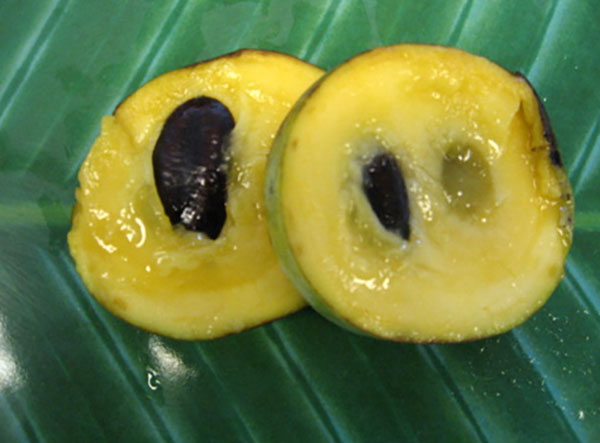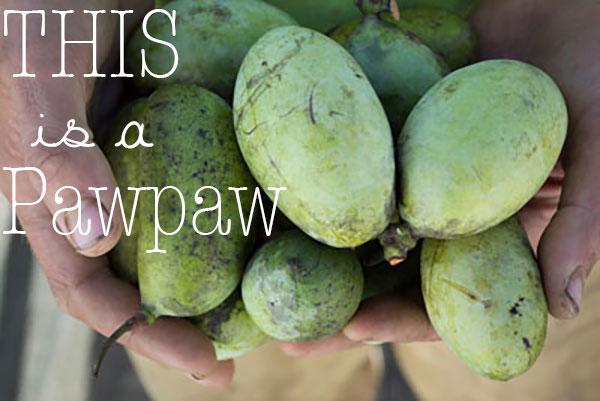Now is the time for “pickin’ up pawpaws and puttin’ ’em in your pockets” as the children’s chant goes. The best pawpaws are the fully ripe fruits that have fallen to the ground between mid-August and mid-October, perfect for stuffing your pockets or your face!
Pawpaws are the largest edible fruit native to the U.S. and are an indigenous plant to 26 states east of Nebraska, reaching from Florida to New York. The fruit was an important food for Native Americans and early settlers. Pawpaws graced George Washington’s table in colonial days. And even animals aren’t missing out on this delicious treat — squirrels, raccoons, possums, and bears happily feast on aromatic pawpaw flesh.
Pawpaws are large fruits, similar to mangoes or papayas, ranging in color from yellow to green with skin often flecked. When over-ripe, the skin will turn brown like a banana. They have big black seeds that are easy-to-remove, a custard-like texture, and a flavor that is related to bananas, mangoes and melons. They are known commonly as a poor man’s banana.
“It has a sweet, yet rather cloying taste….a wee bit puckery” is the way their taste was described by a botanist of yore.

So, why is it that you’ve likely never seen a pawpaw, much less tasted one? How could a treasured local food get so hopelessly lost? Pawpaws have never been cultivated on the scale of apples or peaches simply because they don’t ship well. The soft pawpaw is easily bruised and they ripen to the point of fermentation as soon as they are picked. Fresh pawpaws appear seasonally at some local farmers markets, but they are seldom seen on the supermarket shelf. Pawpaw cultivation appeals to organic growers because the fruit has no known pests and so can be grown without pesticides.
To get a pawpaw in every pocket, processing is the key. Pawpaw pulp is best used when pureed, frozen, and added to foods such as juices, baked goods, ice cream, and beer. Yes, beer! Recently, pawpaw pulp has become popular with microbreweries, particularly in Ohio, although the popularity of pawpaw beer is extending to other states.
To make fresh pawpaws commercially viable, agricultural researchers are cultivating varieties with a longer shelf life that still taste great. Nutrition-wise, pawpaws are better than bananas, apples and oranges. They have more protein and healthy fats (hence their custard-like texture) and significantly more of certain vitamins, trace minerals, and other disease-fighting nutrients.
Pay attention to pawpaws. They might be the next big thing in food.
Also Read:
Kale Not King? New Study Says Watercress is Nutritionally Superior
5-Ingredient Fig & Honey Breakfast Quinoa
How to Lose a Guy in 12 Meals: Foods Your Man Just Can’t Understand
images via modernfarmer.com, ohiopawpawfest.com

